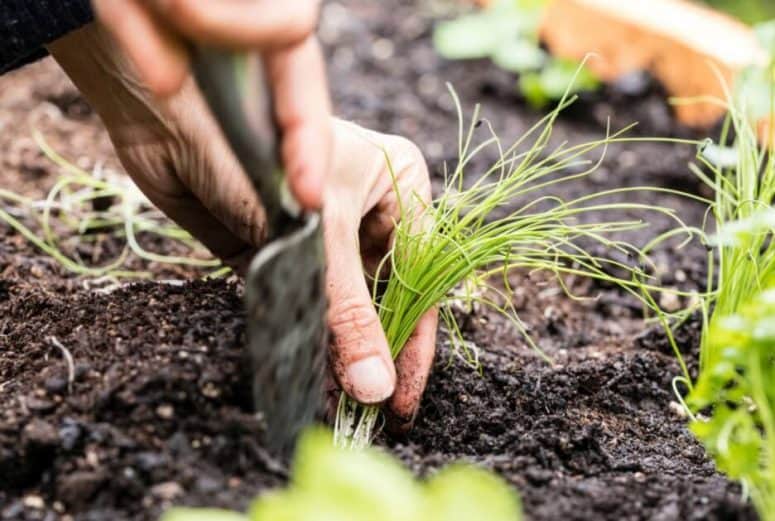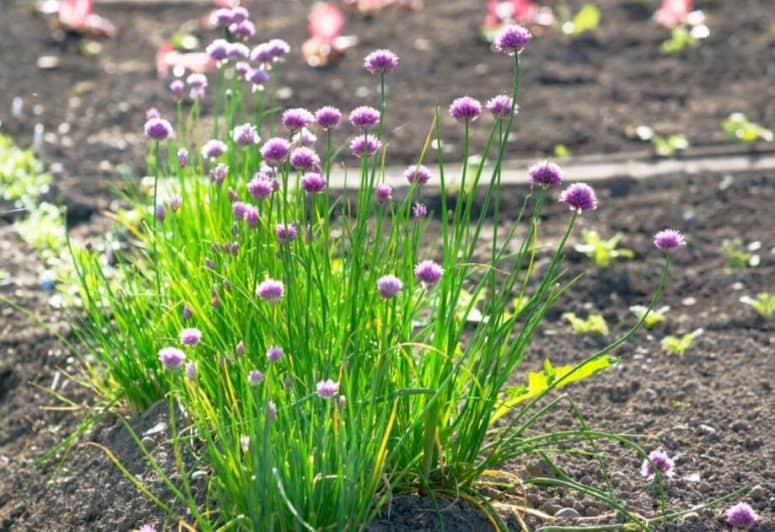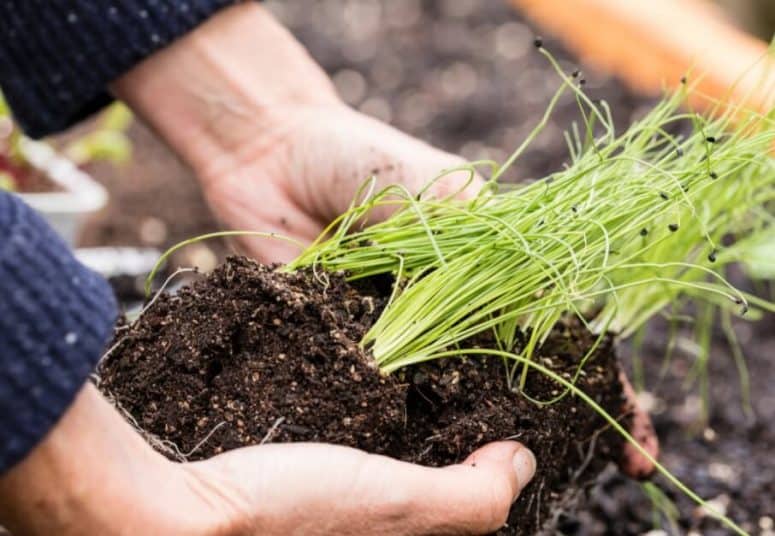Chives are often mistaken for spring onions, which contributes to their widespread recognition as herbs. However, chives and spring onions are distinct from each other. Spring onions have a more pronounced presence and offer different flavor profiles compared to chives.
In terms of appearance, chives resemble onions, with long and light green stems and a mildly pungent taste. One unique aspect of chives is that they produce edible flowers. There are various chive species, and both the stems and flowers can be consumed either raw or fried. Chive flowers can even be used to infuse vinegar with a delightful onion flavor.
Similar to parsley, chives are commonly used as a versatile garnish, but they possess a more robust and onion-like flavor. While parsley adds freshness to dishes, chives contribute a vibrant, oniony, and slightly spicy taste.
Chives are particularly well-suited for soups, oil glazes, dressings, dips, and dishes featuring potatoes as their base. The taste of chives can be reminiscent of a combination of onions and garlic. This makes them a great addition to buttery sauces or dishes, as they provide an aromatic sensation similar to that of freshly baked garlic bread.
Since chives are often consumed raw and fresh, there is limited cooking involved when using them.
Additionally, did you know that chives contain vitamin K, which aids in increasing bone density and preventing osteoporosis? They are also believed to possess cancer-fighting properties and enhance memory skills.
Growing chives in your own home can be a rewarding gardening activity. It not only saves money but also enhances your cooking. Fortunately, cultivating chives is relatively easy, even for those new to gardening. Here, you’ll find the ultimate guide on how to grow chives at home.
How to Grow Chives

Indoor or Outdoor?

Soil

Light
Chives thrive when exposed to full sun, but they can also tolerate light shade if planted outdoors in a garden setting.
If you choose to plant chives indoors, it is still possible to provide them with suitable conditions. Simply place the container near a sunny window inside your house. Chives can tolerate some light shade, so as long as they receive adequate sunlight through the window, they should be able to grow well.
Water
When it comes to watering, chives have moderate water needs, especially during their establishment phase if you plant them from seeds.
However, it’s important to note that chives are quite tolerant of drought conditions. In fact, they prefer to be slightly dry rather than overwatered. To maintain proper moisture levels, water the soil once the top few inches have dried out.
If you’re not able to provide regular watering, mulching can be a helpful technique. By adding a layer of mulch around the chives plants, you can conserve moisture in the soil and prevent weeds from growing, which can compete for water and nutrients. This will help keep the chives healthy and prevent the bulbs from splitting.
Temperature
While chives are generally resilient and can tolerate drought conditions, it’s important to note that they may enter a dormant state during the intense heat of summer. Similarly, the foliage of chives can be susceptible to freezing temperatures during winter, which can lead to their demise.
To overcome these challenges, many gardeners choose to overwinter their chives by growing them in pots. This allows for greater control over the growing conditions and offers protection from extreme weather.
For optimal results, it is recommended to plant chives during the spring and fall seasons when there is ample sunlight and regular watering. These conditions provide the ideal environment for chives to thrive and produce flavorful foliage.
Fertilizer
When it comes to fertilizing chives, they are not demanding in terms of specific nutrients. Providing aged compost and organic matter is usually sufficient for the healthy growth of chives. These natural amendments offer the necessary nourishment for chives to thrive and develop without the need for additional fertilizers.
Harvesting
Once chives have been transplanted from cuttings, they can be harvested after approximately 30 days. If grown from seeds, the harvesting time is around 60 days. Chives typically bloom flowers during the late spring or summer, and these flowers are also edible and can be enjoyed.
To harvest chives, you can cut the stems down to the base regularly. This practice encourages the production of more leaves, promoting a healthy growth cycle.
Freshly harvested chives are commonly used immediately. If you wish to store them, you can cut the chives into smaller pieces and pack them into ice cube trays filled with water. This freezing method helps preserve their freshness for later use.
When harvesting, start by cutting the outer leaves first. It is recommended to harvest from the base of the leaves to avoid leaving plants with cut tops. Leave approximately 2 inches of the leaf blade above the soil to allow the leaves to regrow. It is important to leave some top growth on the clumps to ensure the bulbs maintain their strength.
To allow the chive plants to flower and the clumps to expand, it is advised to stop harvesting approximately three weeks before the first frost date. In the case of garlic chives, they can be pulled out entirely, including the roots.
Troubleshooting the Pest
One common concern when it comes to chives is aphids. These pests can be problematic, but you can address the issue by spraying your chives with neem oil or insecticidal soap. Make sure to apply the spray directly on the waxy leaves to ensure it comes into contact with the aphids.
In addition to aphids, it’s important to be mindful of potential issues like root rot and bulb diseases. To prevent these problems, it is crucial to maintain good watering practices and ensure the soil quality is suitable for chives. By providing adequate and appropriate watering and ensuring the soil is well-drained, you can help mitigate the risk of root rot and bulb-related issues.
Conclusion
Chives are a resilient plant that can tolerate drought but should not be overwatered. However, it’s important to note that extreme heat during summer or freezing temperatures in winter can still harm chives.
To ensure the healthy growth of your chives, regular watering is necessary. Wait until the top layer of soil has dried out before watering again. Providing chives with ample sunlight by placing them in a location with full sun exposure is also crucial.
Additionally, it’s essential to be mindful of pest-related issues and take appropriate measures to troubleshoot them. By addressing any potential pest problems promptly, you can cultivate thriving chives in your home or garden.